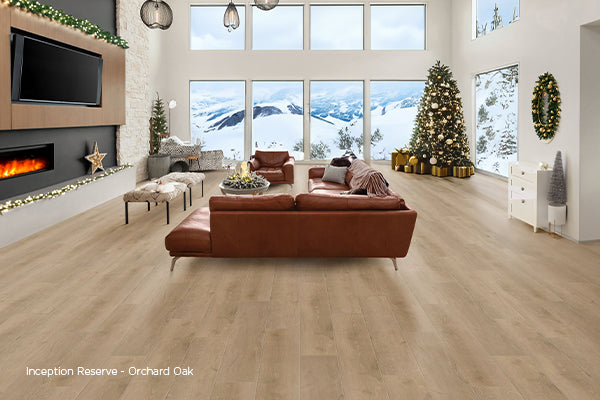
What Is Underfloor Heating and Can You Install Luxury Vinyl Tile or Plank Floors Over It?
Share
Underfloor heating systems are an increasingly popular and economical method of heating in homes and businesses. Underfloor heating relies on radiant heat rising from flooring, resulting in an even distribution of heat throughout a room or the home.
Conversely, traditional forced-air heating causes warm air to rise, making your floor the coolest place in the room. The warm air cumulates at the ceiling, leaving you with a chilly floor and cold feet.
With underfloor radiant heating, warm air cumulates right above the floor and distributes a more even temperature in a room or the entire home. This means you can be warm and comfortable without having to overheat your home or waste energy.
The application of underfloor heating is universal. It can be installed in homes, apartment complexes, hotel rooms or other commercial settings.
The benefits of underfloor heating:
- Great for people with allergies or asthma because it’s not forcing air through dusty ducts or unclean filters
- Extremely energy efficient
- Immune to duct leaks
- Provides better consistent temperature control (once temperature has been reached)
- Typically requires far less maintenance and fewer repairs
The downsides of underfloor heating:
- Radiant heating takes longer to heat a room
- It’s difficult (in many cases simply not possible) to use radiant underfloor systems for cooling
- It costs more to install than forced-air systems if you’re installing throughout a home
- Retrofitting a home with underfloor heating requires tearing out existing flooring
- Performing repairs or maintenance is difficult
Many people choose to install underfloor heating in specific rooms, like bathrooms, kitchens or bedrooms, while still relying on forced-air heating for whole-house temperature control.
How Does an Underfloor Heating System Work?
Electric Underfloor Heating
Electric underfloor heating is provided by thin heating wire right under the floor. This type of underfloor heating is controlled by a thermostat. It’s also relatively easy to install because it doesn’t require you to raise the floor. However, you will likely want to hire a certified electrician to install the heating element and connect the thermostat to the underfloor heating system.
Warm Water System
As the name suggests, this system uses warm water to create heat. The water circulates through a network of pipes installed underneath the floor to allow even heat distribution. The system needs to be connected to a boiler to ensure the water stays warm. Like with the previous method, the warm water system also uses a thermostat to detect temperature changes.
Can Underfloor Heating Be Installed Under Existing Flooring?
No – you will need to have flooring removed and then reinstalled or replaced once the underfloor radiant heating is installed.
Can Underfloor Heating Be Used with LVT and LVP Flooring?
Yes, you can install luxury vinyl flooring over underfloor heating. However, there are several stipulations you must adhere to when installing luxury vinyl over an underfloor heating system. LVT and LVP products are made of temperature-sensitive materials. Your floor will have a strict temperature limit that cannot be exceeded. As a rule, the underfloor heating temperature should not exceed 85-degrees Fahrenheit. Reference your Metroflor installation handout and speak with a Metroflor specialist or the radiant heating manufacturer to learn more about the limits of your luxury vinyl flooring.
How to Install Underfloor Heating?
There are a few different radiant heating methods: water, electric or air. People who want to install radiant heating into an existing home frequently use water or electric. The installation process is fairly straightforward, but generally still requires the assistance of an expert. Both systems are quite similar in how they’re installed in a room. The general installation process goes as follows:
- Clean the subfloor before installing any heat-inducing material
- Lay down and attach the pipes for hot water or electric heating wire to the subfloor
- Install insulation boards to improve your heating system’s efficiency
- Test the heating system before finalizing the installation
- Cover the area with self-leveling underlayment, like cement or epoxy, and wait for it to dry
- Connect your system to a boiler and/or thermostat
- Install LVT, LVP or the flooring of your choice per the manufacturer's instructions
Find the Perfect Flooring Solution for Your Home or Business
At Metroflor, we offer a broad range of luxury vinyl flooring products that emulate the appearance of wood, tile or stone. Our floors are compatible with most underfloor heating systems.
Depending on your luxury vinyl flooring installation method, it can be relatively easy to pull up and reinstall luxury vinyl after radiant heating has been installed.
Browse our rich and diverse selection of LVT and LVP flooring to find the perfect fit for your needs. Find and contact a dealer near you for more information and assistance.